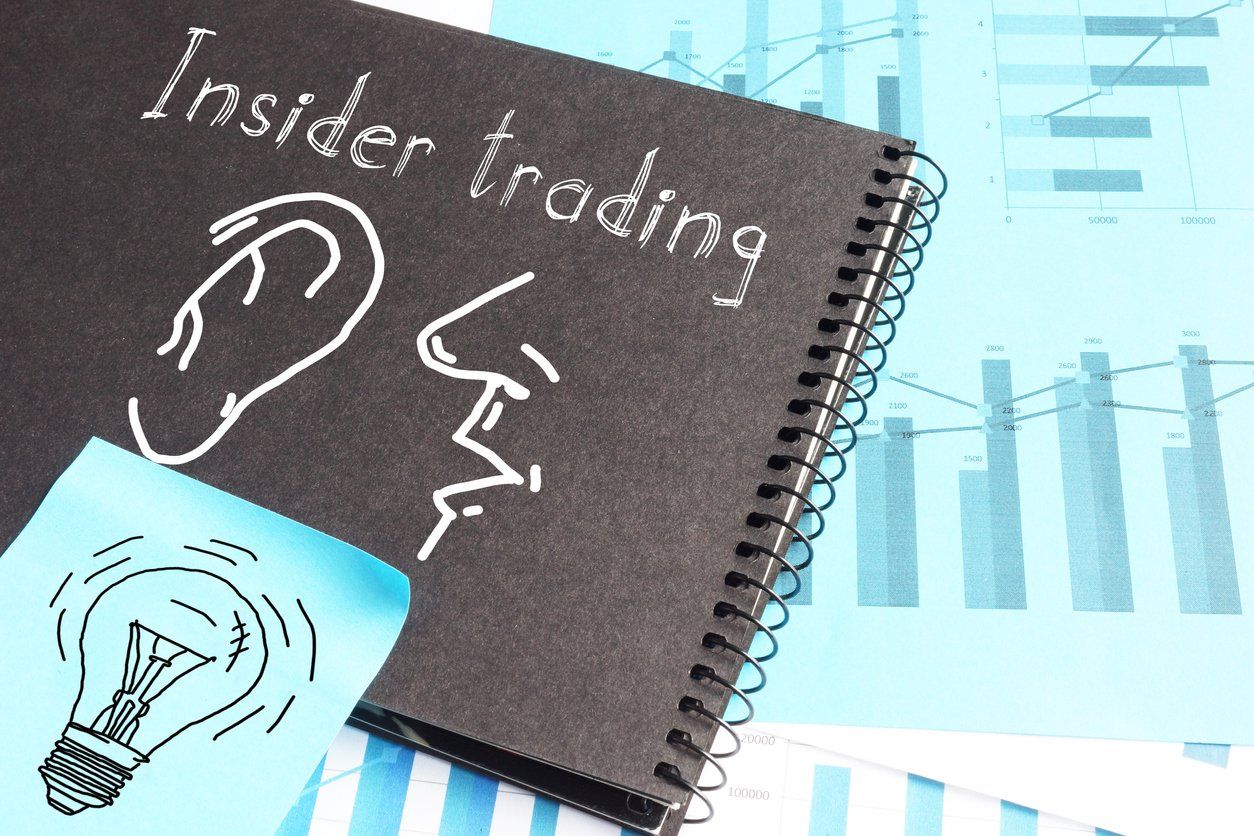Insider Trading and What It Can Teach Us
Have you heard the saying – We all have the same opportunities to succeed or fail? This sounds great, but as we know, it’s not always true. Investing in the stock market provides a means to build generational wealth, but this premise is based upon all participants having a level playing field.
For a moment, imagine if someone on the New England Patriot’s coaching staff was passing information to the opposing team – would Tom Brady have won those seven (7) Super Bowl titles? Well, in the stock market there are those who seek opportunities to cheat the system, via insider Trading. So, let’s talk about it…

What Is Insider Trading?
Insider trading is the practice of buying and selling stocks, bonds or other securities, based on material information that the general public does not have access to. Non-public material information is any news or knowledge able to impact an investor’s decision on whether to buy or sell a security, not made available to the public.
Imagine an employee of ABC Pharmaceuticals becoming aware his company will be announcing the release of a revolutionary drug to eliminate peanut allergies in (5) days and thus proceeding to purchase 10,000 shares of the company’s stock before the official public announcement. This is illegal insider trading, as the employee used non-public information, having the ability to impact the company's stock price to their advantage.
In other scenarios, insider trading is legal and very common, since insiders can buy and sell shares of their own company – so long as they follow specific timing guidelines and accurately report their trades to the SEC. An insider is generally considered to be a director, officer or someone who owns more than 10% of a company’s voting shares. However, for insider trading purposes, this person is additionally anyone who trades a company’s shares based on non-public material information.
Being knowledgeable of insider trading patterns can provide valuable insights into a company's direction. For example, if a large number of insiders are buying the company's stock, this could signal they believe the stock is undervalued and will increase in the future. On the other hand, if many insiders are selling the company's stock, this could be a signal they believe the stock is overvalued and will decrease in the future.
Past Example of Insider Trading
There have been numerous examples of illegal insider trading throughout the years, but let’s revisit one of the most famous occurrences – Martha Stewart and ImClone…
In December 2001, the Food and Drug Administration (FDA) announced it would not approve a new cancer drug called Erbitux from the pharmaceutical company ImClone. This was a huge deal for ImClone, as a major portion of future company growth was based upon the FDA approval of Erbitux. As a result, the company's share price dropped rapidly, with many investors experiencing losses. However, family and friends of then CEO, Samuel Waksal, were financially unharmed as Mr. Waksal instructed them to sell their shares prior to the FDA announcement…he even attempted to sell his own shares.
In fact, just days before the announcement, Martha Stewart sold nearly 4,000 shares of ImClone. At a time when the stock was still trading at a high level, and Ms. Stewart made nearly $250,000 on the sale. This was great timing for Ms. Stewart as ImClone’s share price plummeted from approximately $60/share to just over $10/share in the following months.
Ms. Stewart claimed to have a pre-existing sell order with her broker, but it was later revealed that her broker tipped her off that ImClone's stock was likely going to drop. And of course we know how the story ends - Ms. Stewart eventually resigned as the CEO of her own company, and was found guilty of insider trading, being sentenced to a minimum of (5) months in prison and fined $30,000. In case you’re wondering, Mr. Waksal was sentenced to more than seven years in prison and fined $4.3 million.
Final Thoughts
Understanding insider trading will assist in your investing journey, while illegal insider trading corrupts aspects of the stock market and leads many to serving jail time. Legal insider trading is always occurring, so pay attention to the stocks of which you are invested and when you see a large sell or purchase by an “insider”, ask yourself why and make sure to do the research to uncover the reason.
Investing always comes with risk, but research and patience will help you reach your desired financial destination. Want to know more about how stocks can perform in a recession? Check out our blog post How the "Lipstick Effect" Drives Sales During Recessions.









ACTIVE HOURS
- Mon - Fri
- -
- Saturday
- Appointment Only
- Sunday
- Closed

